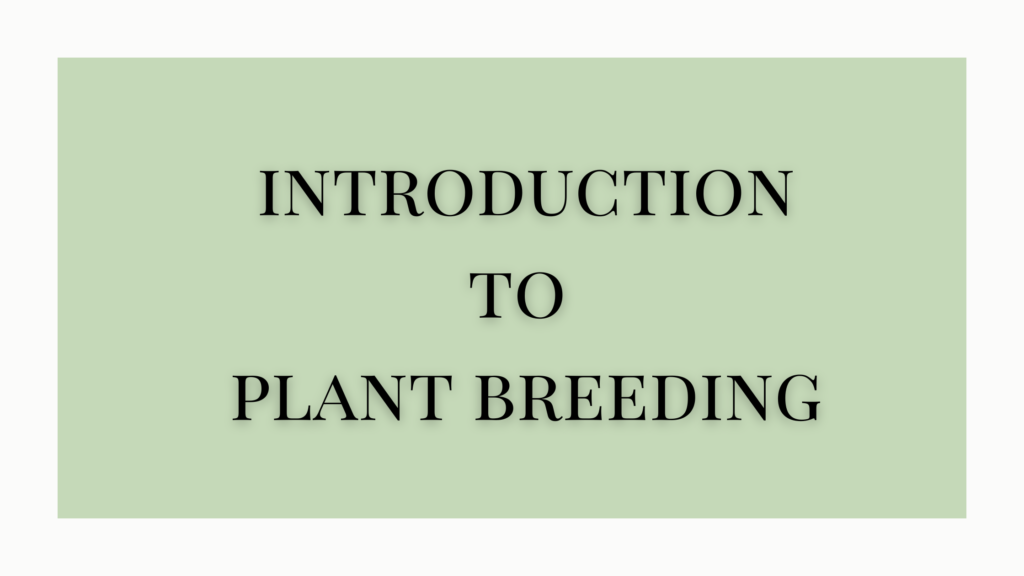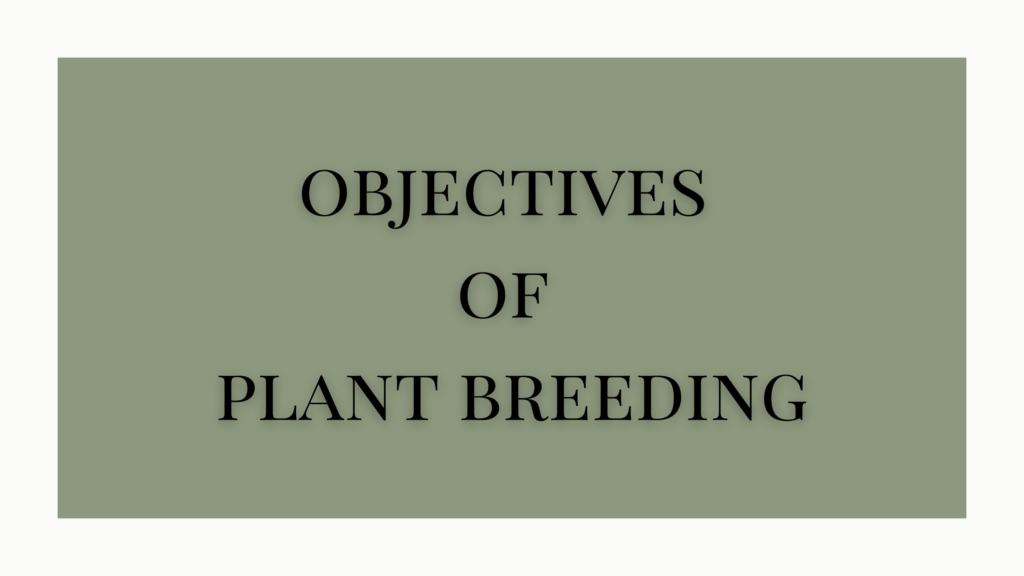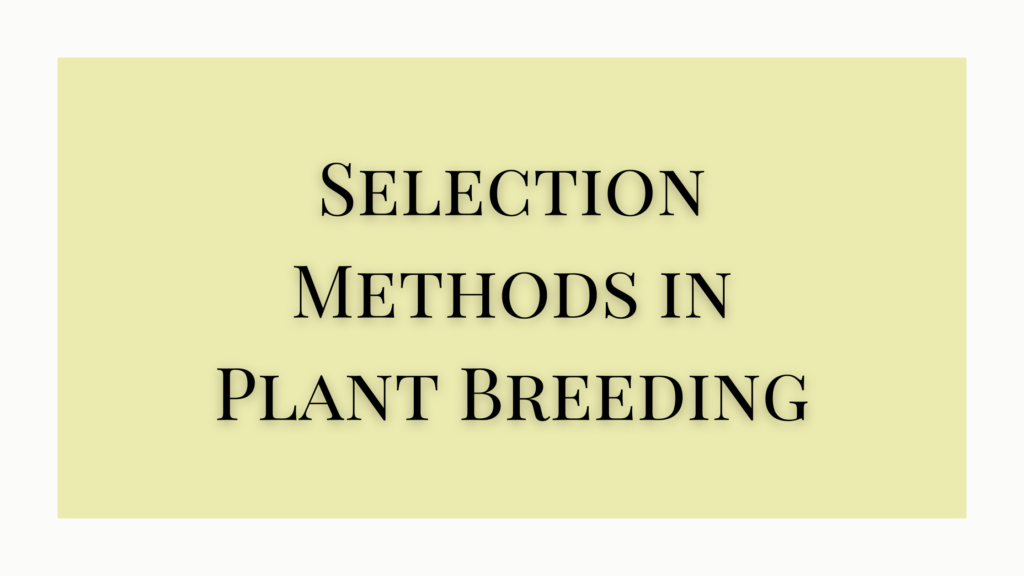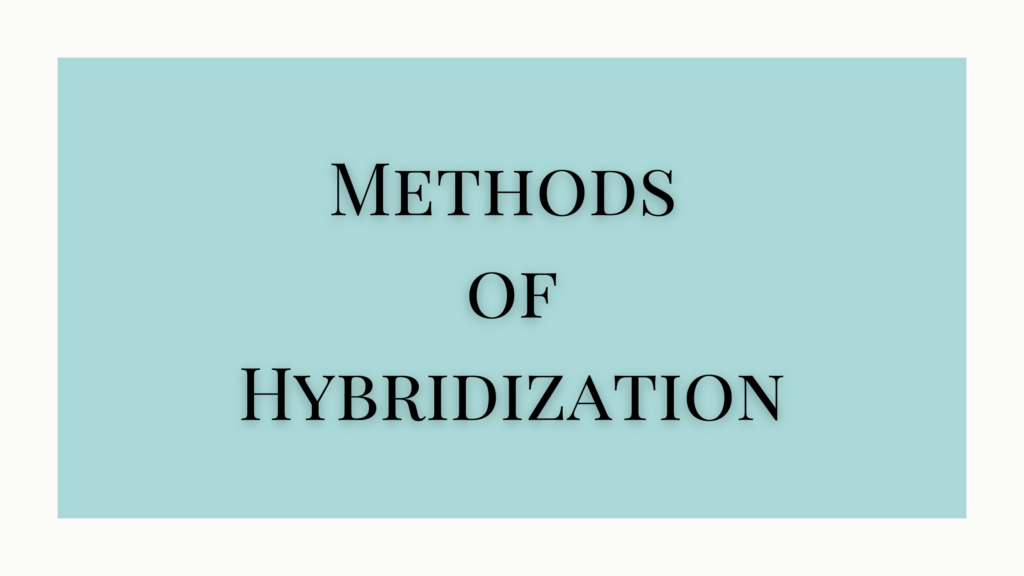Plants are an integral part of every life on the earth. Humans are directly and indirectly dependent on plants for food and shelter. Plants are major sources of clothing, fuels, drugs, and construction materials. Moreover, as ornamentals, they are aesthetically pleasing and economically useful.
During the early times, the introduction of plant breeding was to improve plants for human needs. There was no scientific basis for these practices. In these past few decades, scientific knowledge in plant breeding has increased manifolds.
Now, humans are creating efficient genotypes for trapping solar energy and converting them into food, fuel, and fibers, from the early days of agriculture. Thus plant breeding could be considered one of the earliest and foremost endures of humans which helped them move towards civilization.
Definition of Plant Breeding
Poehlman (1931) defined plant breeding as the art and science of changing and improving the plant heredity that will benefit humans. In other words, plant breeding is the manipulation of plant qualities to produce new varieties that show better characteristics as desired by the breeder.
Plant breeding technology can manipulate the physical characteristics or genetic makeup of plants, to get new varieties.

History of Plant Breeding
It is reasonable to assume that plant breeding, however primitive, began when humans first chose certain plants for cultivation. The process of bringing wild species under human management is referred to as domestication.
Domestication is likely to give rise to better types than wild types and is regarded as a plant breeding method. It continues till now and is likely to continue in the future as well.
This is particularly true for timber trees, medicinal plants, and for plants that satisfy some other requirements. Apart from plants fungi are domesticated for antibiotic production and bacteria for transferring specific genes for disease resistance from wild plant species to cultivated ones.
Although the introduction of plant breeding was to improve agriculture crops, these days it is used for improving ornamental plants, especially rose plants. Rose are bred for their beautiful flowers, for perfume, medicines, etc.
Timeline of plant breeding
During the long period of prehistoric and historic cultivation, natural selection has definitely acted on domestication species. Humans have likely exerted some selection knowingly or unknowingly.
The movement of humans from one area to another brought about the movement of cultivated plant species. One of the most important parts of plant breeding is the introduction of new plant species or varieties into a new area from other parts of the world.
Babilonians and Assyrians pollinated date palms artificially in the early 700 BC.
- The first experiments on hybrid plants were done in 1694 by R. Camerarius.
- In 1717, Thomas Fairchild was the first one to scientifically produce artificial hybrids.
- In 1790, the German Botanist Joseph Gottlieb Kölreuter produced interspecific tobacco varieties between Nicotiana paniculata and N.rustica. The resultant breeds showed male sterility.
- Thomas Andrew Knight produced hybrids of apples, peaches, pears, and grapes in the late 18th century.
- In 1882, Alphonse de Condolle gave a detailed account of the origin and history of cultivated plants.
- Johanson in 1903 proposed the pure-line theory that provided the genetic basis for individual selection.
- In 1904, Nazareno Strampelli in Italy created several wheat hybrids.
- Shull proposed the concept of heterosis in 1908 while working on cross-breeding and inbreeding in maize.
- D. F. Jones proposed the double-cross method in 1919.
- Marcus Morton Rhoades described cytoplasmic male sterility in 1933.
The modern plant breeding methods are thus based on genetic and cytogenetic principles. The science of genetics began with the rediscovery of Mendel’s papers in 1900 which was originally published in 1866.
The realization that the chromosomes are carriers of genes has led to the development of specialized plant breeding methods. Numerous workers who determined the various modes of inheritance have helped to understand plant breeding.
Types of Plant Breeding
There are different procedures of plant breeding to get the desired characteristics.
- Inbreeding is self-fertilization that results in the same type of progeny which preserves the original traits.
- Backcrossing refers to the cross between a progeny with one of the parents which will help fine-tune a specific character in the parents.
- Hybridization is where plants of different types are bred together to produce an entirely different variety.
- Mutation breeding induces genetic changes through radiation and chemicals.
- Genetic engineering manipulates the genes through the insertion of genes of desired qualities.
References
Gudin, S. (2002). BREEDING | Overview. Encyclopedia of Rose Science, 25-30. https://doi.org/10.1016/B0-12-227620-5/00175-0Copy
Additional Reading
- Objectives of Plant Breeding
- Selection Methods in Plant Breeding




